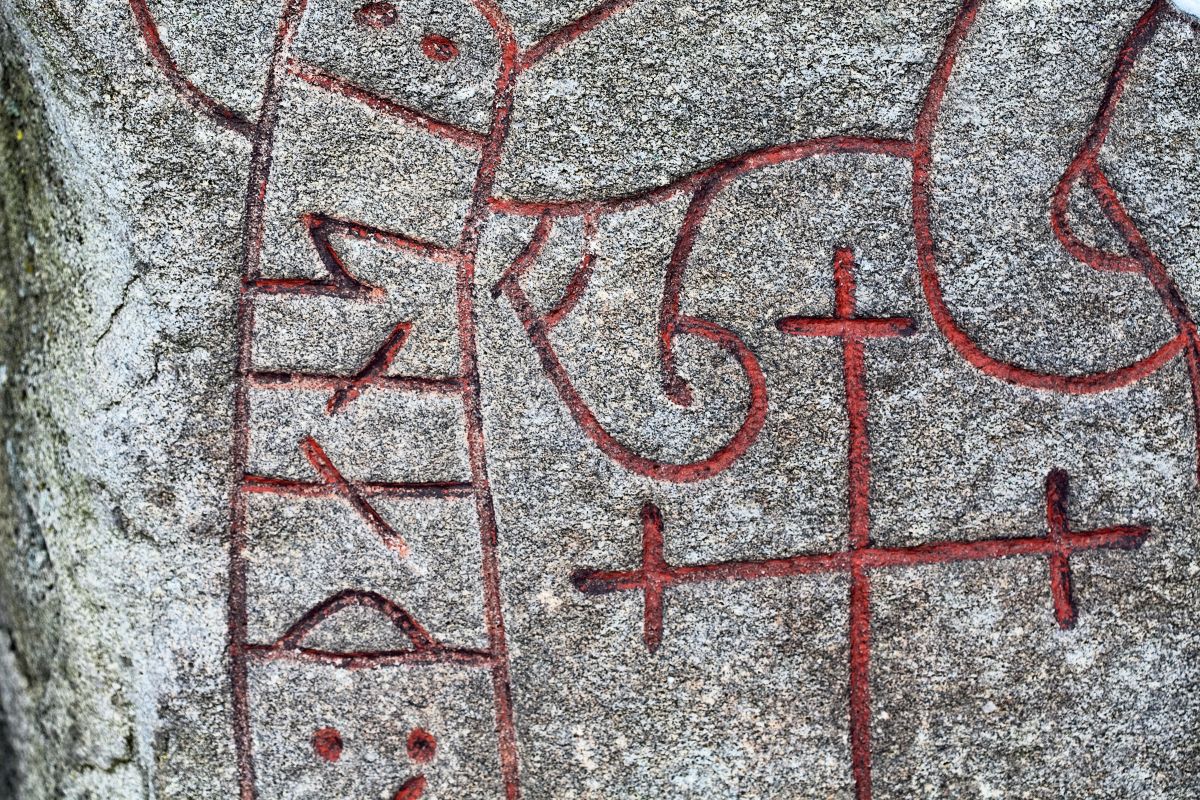The modern Asatru religion was legally established in 1970s Iceland to reclaim the Norse pagan religion decimated by Christian expansion. They celebrate several Norse Pagan holidays, the most important of which is Yule.
Norse Pagan holidays were a big part of Viking traditions. When Christianity first reached Viking land in the mid 9th century, the Nordic peoples fought hard to retain their traditions. By the 12th and 13th centuries, most of the Vikings had been converted. But a few Nordic tribes in remote areas were able to hold onto the Norse Pagan tradition until the early 1900s.
Even those that converted to Christianity incorporated many of the traditional Norse holidays in their homes. The Norse Calendar was still used, translated to align with the dates first in the Julian Calendar, then the Gregorian Calendar. Many continued to give Launblót, or secret offerings to the Norse gods, even though they were counted among the converted.
In the 1970s the Asatru religion was established to revive the Old Norse Pagan traditions. The movement was started by Icelandic people who rejected Christianity, practicing in secret for generations. Like many religions, there are different sects of Asatru, but for the most part, they celebrate the same Norse Pagan holidays and have similar spiritual practices.
The Old Norse Calendar
The Old Norse calendar is divided into two seasons-Winter and Summer. Because Scandinavian winters are so harsh, the Vikings counted their age by how many winters they’d managed to survive. The two parts of the year were then divided by what normally happened during the year, such as weather patterns, feasts, and farming.
Since so much of the Viking world was conquered by Christianity, there aren’t many records of the complete Old Norse calendar the ancient Germanic tribes followed.
Modern Norse Pagans used surviving records along with Norse legends and sagas to stitch together the Heathen calendar that is used today. This Icelandic calendar, which was used until the 1800s, was also a valuable resource in recreating the Norse calendar.
The Norse calendar is called the Wheel of the Year and is used by the Asatru and other Heathen religions today.
What is the Wheel of the Year?
The Wheel of the Year is the Old Norse calendar that is read clockwise. Summer and Winter each have 6 months that correspond with the full moon. Every month has 30 days, except for the third Summer month called Sólmánudur. Four days are added to this month to account for the number of days in the year. Sólmánudur is the brightest time of the year.

Unlike many lunar calendars, the Wheel of the Year stays consistent to align with the solar year. This is accomplished in two ways. The addition of four days just before midsummer only accounts for 364 days. To combat this problem, every 7th year an entire week is added to the end of Summer in a unique leap year system unlike the Gregorian calendar. This week is called Sumarauki, which translates to “Summer addition.”
The new year starts with the 6 Summer (Nattleysi) months.
| Harpa | mid-April to mid-May |
| Skerpla | mid-May to mid-June |
| Sólmánudur | mid-June to mid-July |
| Heyannir | mid-July to mid-August |
| Tvímánudur | mid-August to mid-September |
| Haustmánudur | mid-September to mid-October |
The year ends with the 6 Winter (Skammdegi) months.
| Gormánudur | mid-October to mid-November |
| Ýlir | mid-November to mid-December |
| Mörsugur | mid-December to mid-January |
| Þorri | mid-January to mid-February |
| Góa | mid-February to mid-March |
| Einmánudur | mid-March to mid-April |
What holidays were the most important for the Vikings?
Yule is perhaps the most well-known of the Viking holidays. It is also the most important of the Norse Pagan holidays. During Yule, the Norse gods and goddesses are believed to be the closest to Midgard, realm of the humans.
Yule is celebrated from December 19th through the New Year on January first. Some modern day Pagans start Yule on December 20th.
As the darkest time of the year, Yule symbolizes the triumph of light over darkness. During the Viking age, Yule was also a time to feast to socialize and form alliances.

Norse pagan holidays today
Modern day Asatru and other Norse Pagans celebrate similar Heathen holidays. Since many of the pre-Christian traditions and relics were destroyed by crusaders, there is a bit of disagreement between sects regarding certain holidays. The three that are celebrated by all Norse Pagans are Sigrblot, Disablot, and Yule. The remaining Heathen holidays are celebrated depending on the individuals.
Sigrblot
It starts on the first day of Harpa. Offerings are made to Freyja to celebrate the victory of light over darkness and the beginning of Summer.
Disablot (Disting)
Disablot is celebrated in the beginning of Winter, at the end, or both depending on individual tradition. This Viking holiday honors the Disir, which are female ancestral spirits.
Yule
Yule is a twelve day festival beginning at the Winter Solstice. Yule is associated with the god Odin. Each of the twelve days is attached to a specific tradition, which varies between Norse Pagan sects.
Alfablot
Alfablot is the first day of Winter celebrating the Harvest and giving offerings to Freyja.
Vetrnaetr
Winter nights, celebrated on October 31st. This is the end of the harvest season and the beginning of hunting season.
This festival lines up with the Celtic/Wiccan Samhain and happens after the Autumn Equinox.
Thorrablot
This is Thor’s feast, celebrated primarily in Iceland mid-winter.
Ostara
Ostara celebrates the beginning of Summer. Ostara starts the day after the Spring Equinox.
Walpurgisnacht
Walpurgisnacht is also called May Eve. This holiday is associated with twins Freyr and Freyja and celebrates love, fertility and the promise of fertile fields.
This holiday is especially popular in Sweden.
Midsummer
Midsummer occurs at the Summer Solstice. This celebration centers around light, love, and music.
Freyfaxi
This holiday was taken from the Anglo-saxon wheat harvest festival, celebrated in August. This Heathen festival was forcibly christianized.
Today, Freyfaxi celebrations feature offerings of wheat and other produce from the home garden to Freyr.
What are some traditions of the Norse pagan holidays?
Each of the Norse Pagan holidays has its own traditions. While some holidays like Sigrblot are festivals meant to be celebrated together, other holidays are marked privately at home. Since many of the holidays revolved around the seasons and how the weather affected the daily lives of the Germanic tribes, each holiday’s celebration is unique.
Thorrablot (Thor’s feast) is one such holiday that is celebrated with large gatherings. In Iceland, this holiday was outlawed by Christians only to be revived in the 19th century. Today, Thorrablot is celebrated as both a cultural and religious holiday. Celebrations with food, drink and dancing often carry over into the next day.
In contrast to the public celebration that is Thorrablot, Alfablot is a holiday celebrated quietly in the home. This celebration is typically led by the women. Offerings of food are left for the alfr (dwarves), especially apples. Many believe that letting a stranger into the home during this time will bring the wrath of Odin.
Norse Pagan holiday traditions also vary from family to family. Just like any other religion, some families are more devout than others. Some families combine their Norse Pagan roots with other religious practices, while others celebrate the Viking holidays as part of their culture rather than religiously.

